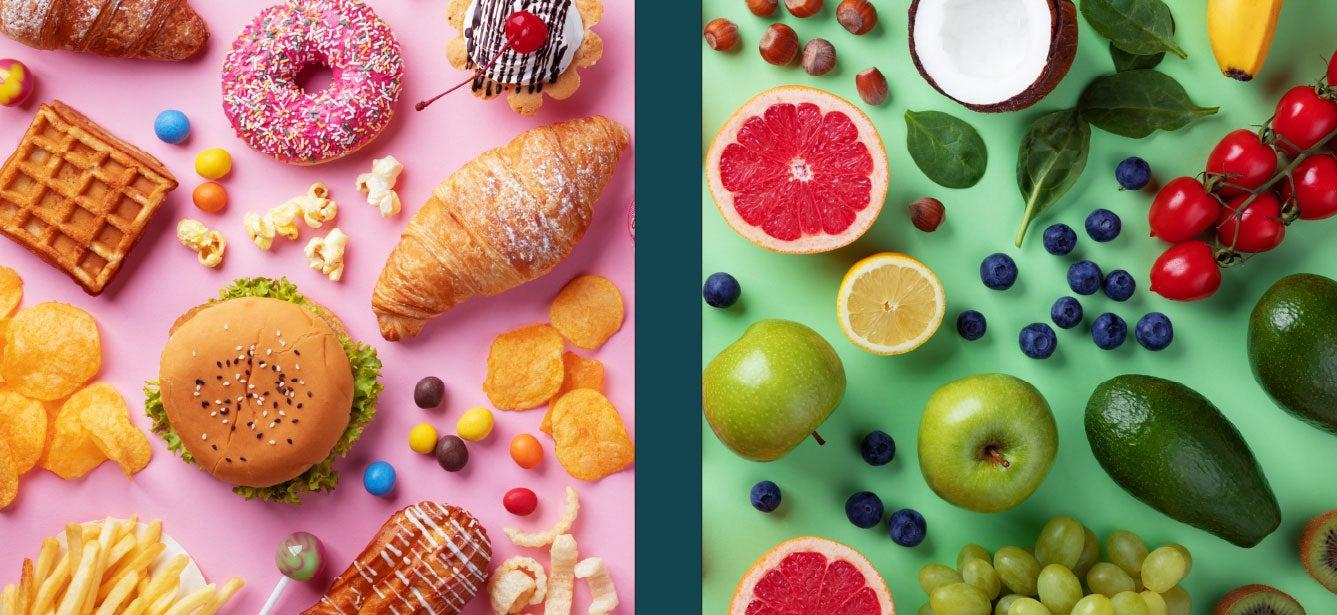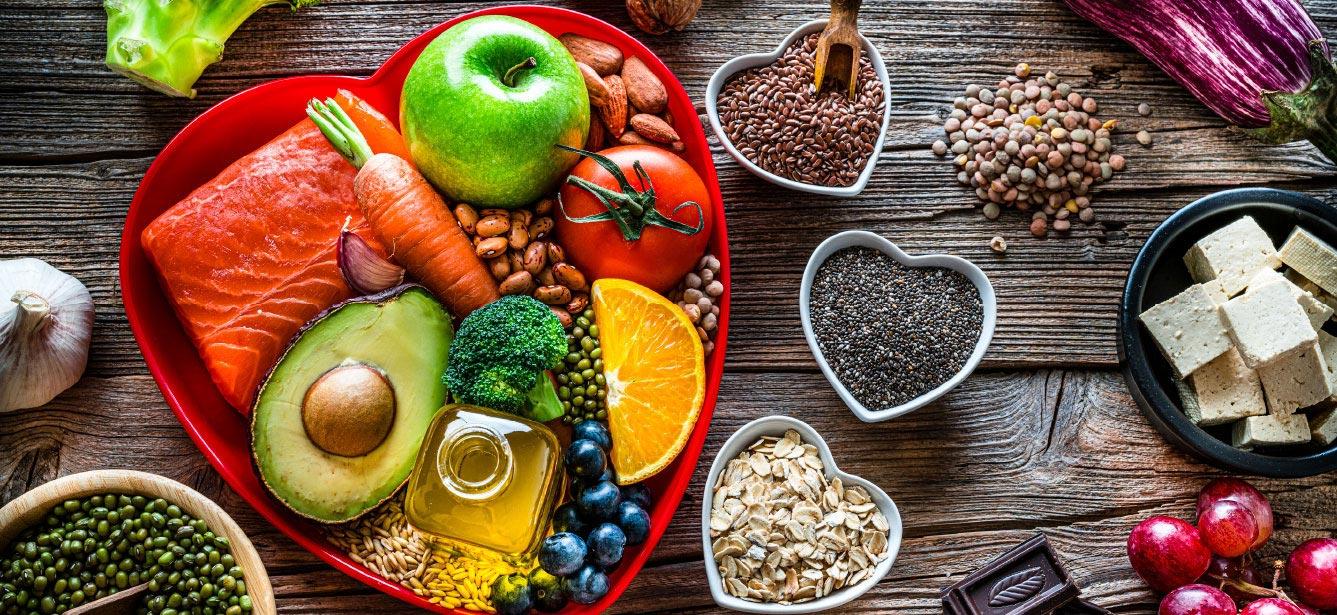
Related Topics
Cholesterol is a natural substance your body needs to build healthy cells and make hormones. There are two places cholesterol comes from:
- Blood cholesterol comes from your body.
- Dietary cholesterol comes from the foods you eat.
There are two types of cholesterol: the good and the bad. Low-density lipoprotein cholesterol (LDL) is considered the bad kind, and when your levels become too high, that’s a problem. Elevated LDL levels can cause fatty buildup within your artery walls, raising your risk for heart attack and stroke. Nearly 2 in 5 American adults have high cholesterol.1
How can you lower your cholesterol?
Although the body produces its own cholesterol, you may be able to lower your cholesterol simply by changing the way you eat. Does that mean avoiding all foods that have cholesterol? Not quite.
For a long time, cholesterol was seen as a dietary villain. However, while some high-cholesterol foods were once thought to increase LDL levels, researchers have found this is not the case. “Healthy” high-cholesterol foods that are rich in nutrients and low in saturated fat—like eggs and shellfish—are fine for most people to eat in moderation. In fact, these foods are rich in protein and other key vitamins and minerals that can benefit your overall health.
Dietary sources of cholesterol are found primarily in animal products, such as milk, eggs, meat, and cheese. So what foods increase cholesterol? The worst culprits are those foods high in saturated fat content. You want to limit your intake of foods that are high in saturated fat and cholesterol-containing foods that have a poor nutritional profile. The list below can help steer you in the right direction.
What are the worst foods for high cholesterol?
1. Fried foods
Sure, French fries and mozzarella sticks may be tasty, but if they are made using partially hydrogenated oils or fried in butter or shortening, they contribute to elevated LDLs. What's more, fried foods are often high in calories due to all the oil they absorb during frying. In other words, they’re not great for your waistline.
As if these things weren’t bad enough, the high-temperature frying process has been found to cause the formation of trans fatty acids (trans fats). The primary source of trans fats is “partially hydrongenated oils”. Trans fats are not recognized as safe and are being phased out, but they give foods a desirable texture and have been used in baking and frying. They not only have a harmful impact on cholesterol levels; they’re linked to heart disease, cancer, obesity, and other serious health conditions.
Eat this instead: If you crave the salty crunch of fried fare, swap your deep fryer for a countertop air fryer. Found at most big-box stores, air fryers lend a golden-brown finish to vegetables and meat while using very little oil. Another idea: toss potato wedges or kale with some liquid vegetable oil (the good fats) and seasonings and then bake them in the oven until they’re and crispy and delicious.
2. Processed meats
Processed meat includes bacon, ham, hot dogs, sausage, and other meats that have been altered from their natural form through curing, smoking, and salting. These foods tend to be high in artery-clogging saturated fat as well as sodium, which can contribute to hypertension. Processed meats are also low in nutritional value.
Eat this instead: While it’s ok to indulge in the occasional BLT, it’s good to have cholesterol-friendly alternatives at home. Rather than stuffing your sandwich with ham or salami, try skinless barbecued chicken breast, canned tuna, or sliced pork tenderloin. Skip the meat toppings on your pizza and sprinkle it with grilled mushrooms, tomatoes, or eggplant.
3. Baked goods
Who doesn’t love a plate of fresh-baked chocolate chip cookies? Unfortunately, since many store-bought cookies are made with butter or shortening, these types of treats tend to be high in both cholesterol and saturated fat. They’re also a source of added sugars. Sugar has been found to lower levels of beneficial high-density lipoprotein (HDL) cholesterol levels. It also triggers higher levels of triglycerides (a blood fat), which can elevate heart attack risk.
Eat this instead: Rather than skipping dessert entirely, substitute fruit and limit your portions of baked goods. If you bake at home, you might satisfy your sweet tooth the healthier way. Here are some tips for lowering cholesterol, saturated fat, sugar, and calories in your baked goods:
- Cut down the amount of sugar and butter in a recipe.
- See if you can replace butter with margarine or unhydrogenated vegetable oils such as canola, sunflower, or olive oil.
- Substitute skim or low-fat milk for whole milk.
- Swap applesauce or bananas for butter.
- Use whole-wheat flour instead of all-purpose flour (it lowers LDL levels).
- Use fresh fruit instead of canned fruit filling.
4. Red meat (beef, pork, and lamb)
Red meat is generally high in saturated fat and cholesterol, especially ground beef, ribs, pork chops, and steak. If you don't want to give up red meat completely, keep your portion sizes small (up to 3 ounces) and limit your consumption to once per week. Stick with leaner cuts of red meat like 90% ground beef, pork loin or tenderloin, and flank steak.
Eat this instead: As an alternative to red meat, add some lean proteins to your plate. These include:
- Skinless chicken or turkey breast
- Shellfish (e.g., shrimp, scallops)
- White-fleshed fish (e.g., bass, halibut, cod)
- Tofu, which can be baked, grilled, or sauteed
- Beans
- Egg white omelets
5. Refined carbohydrates (white bread, pasta, rice)
Most of us don’t associate bread with high cholesterol. And although white bread doesn’t generally contain cholesterol, it’s broken down by the body just like sugar. Eating too much of these foods can increase your blood LDL cholesterol levels and cause inflammation to spike in your body.
Eat this instead: If you're committed to a cholesterol-lowering diet, make it a point to choose whole grains instead of refined grains. Whole grains contain higher amounts of soluble fiber, which can reduce your LDL levels. Try this:
- Replace white bread and pasta with whole-wheat or whole-grain varieties.
- Add whole-grain rice, couscous, quinoa, or lentils to your meals for a tasty, nourishing side dish.
- Instead of waffles for breakfast, make yourself a hearty bowl of oatmeal topped with your favorite fruit.
Follow a heart-healthy eating plan with the Supplemental Nutrition Assistance Program, or SNAP
Eating well can help you lower your cholesterol naturally and keep your levels in check. But if you’re on a tight budget, affording healthy groceries is difficult. That’s why it’s worth seeing if you meet the 2023 income limits for SNAP (Supplemental Nutrition Assistance Program).
SNAP provides monthly financial assistance that helps eligible older adults eat better and worry less. SNAP benefits can be used in grocery stores, convenience stores, and farmer’s markets across the country.
How do you know if you meet SNAP guidelines? It’s fast and easy with BenefitsCheckUp, NCOA's online benefits checker tool. Visit the website and choose the state where you live. Find out if you qualify for SNAP and other programs that can help you pay for food, prescriptions, utility bills, and more.
Source
1. Centers for Disease Control and Prevention (CDC), Cholesterol. Found on the internet at https://www.cdc.gov/cholesterol/index.htm




